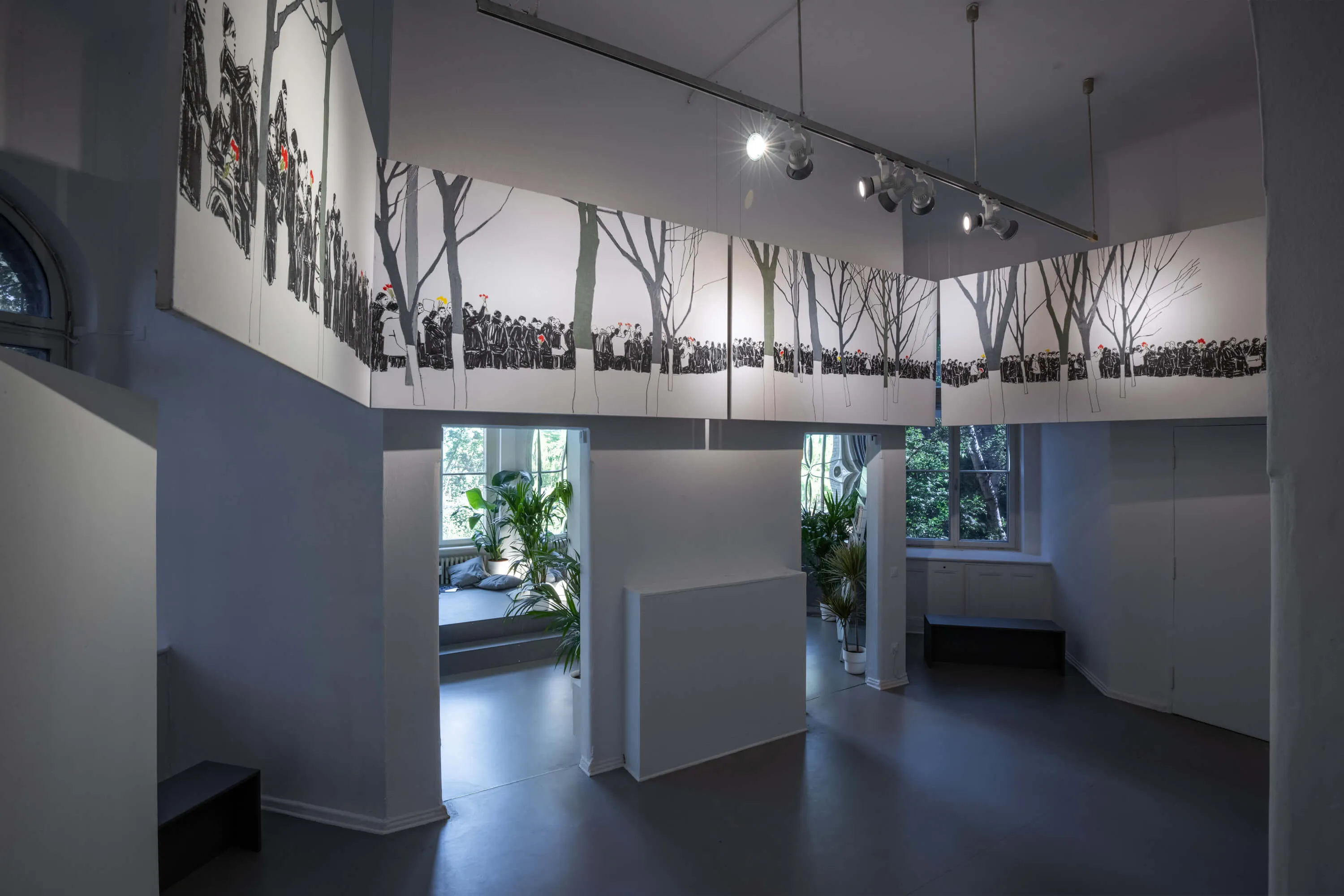Aleksey Dubinsky "The First Day of Spring"

Oil sticks on canvas, 2024
— Your work is about the funeral of Alexey Navalny, Vladimir Putin’s main opponent. Navalny was killed in prison on February 16, 2024. Tens of thousands of people turned out in Moscow to mourn him, even though protests are banned in Russia. You first posted a digital version of the work on social media on March 1, the day of the funeral. How did that come about?
— By that point, the idea of depicting a funeral was already bouncing around in my head — lately, they’ve become one of the most common events. March 1, 2024 was a sunny spring day in Tbilisi. When I saw the news coming from Moscow, the sun gradually started going behind the clouds. I watched videos, I read the latest updates. I was amazed by how many people came to bid him farewell. In my thoughts, I was transported to that river, and it seemed endless. I couldn’t personally participate — it’s as if I started to paint everything I was seeing on the news, to compensate for that loss.

Aleksey Dubinsky

Aleksey Dubinsky

Aleksey Dubinsky
There was no need to come up with a special color palette. A harsh, gray, snowy Moscow morning and a black ribbon of people who had come out to mourn. The bare, gray trees and the colorful dots of bouquets in people’s hands. Monotonous, quiet, anxious.
— What do you think about the common opinion that hope was buried alongside Navalny?
— The world has been and will be cruel, catastrophe follows catastrophe. One of those catastrophes is depicted in my paintings. It seems that we have no strength left to resist; all signs and symbols are against us. But the fact that people are also unified seems just as obvious to me. They try in every possible way to divide and alienate us, but we end up united in grief. I think truth and strength lie in sticking together — in joy and in sorrow. As for killing off hope — let the power to do that not rest with those who want to divide us.
— You didn’t previously use your work to respond so directly to events in the news. What made you want to paint Navalny’s funeral?
— When I’m developing a project, I lean heavily on real events, but then I sometimes change both the characters and the setting dramatically. As a result, the subject that undergirds the work is hidden. So it’s true, my work does not often reference the news directly. But in the story about the funeral there was no need to make complex structural changes: the events spoke for themselves. I worked more like an illustrator would.

Aleksey Dubinsky, painter and graphic artist, calls his method "everyday surrealism". He produces figurative art, with his main subjects being portrait and still life; in depicting people and everyday objects like houseplants and dishes, the artist tries to see them as if for the first time.
Until recently, his work was largely apolitical — he gravitated toward traditional motifs, like flowers or antiquity, and the main themes of his paintings and drawings were questions of a purely graphic nature, like explorations of non-standard relationships between point and line. The artist has developed a recognizable style, using graphic techniques in painting, and combining thin lines and silhouettes with bold, bright color fills.
Dubinsky responded to the beginning of Russia’s full-scale invasion of Ukraine with an animation depicting burning houses. Since then, he has continued to take up new subjects from time to time — like terror and civil resistance — while treating them in his characteristic style.
Aleksey Dubinsky was born in Grozny, the capital of Chechnya, in 1985. In 2011, he graduated from the Ilya Glazunov Russian Academy of Painting, Sculpture, and Architecture, where he majored in historical and religious painting. He won the Martini Art Weekend prize upon graduation, which allowed him to further his arts education at Central Saint Martins in London. From 2014 to 2017, Dubinsky was part of a team that decorated the window displays at TsUM, a famous Moscow department store. His first solo exhibition took place in 2018 at the Moscow gallery Triumph. His work has been shown at MMOMA (the Moscow Museum of Modern Art) and sold on Moscow’s main art markets, Cosmoscow and Blazar. Today, the artist lives and works in Tbilisi.